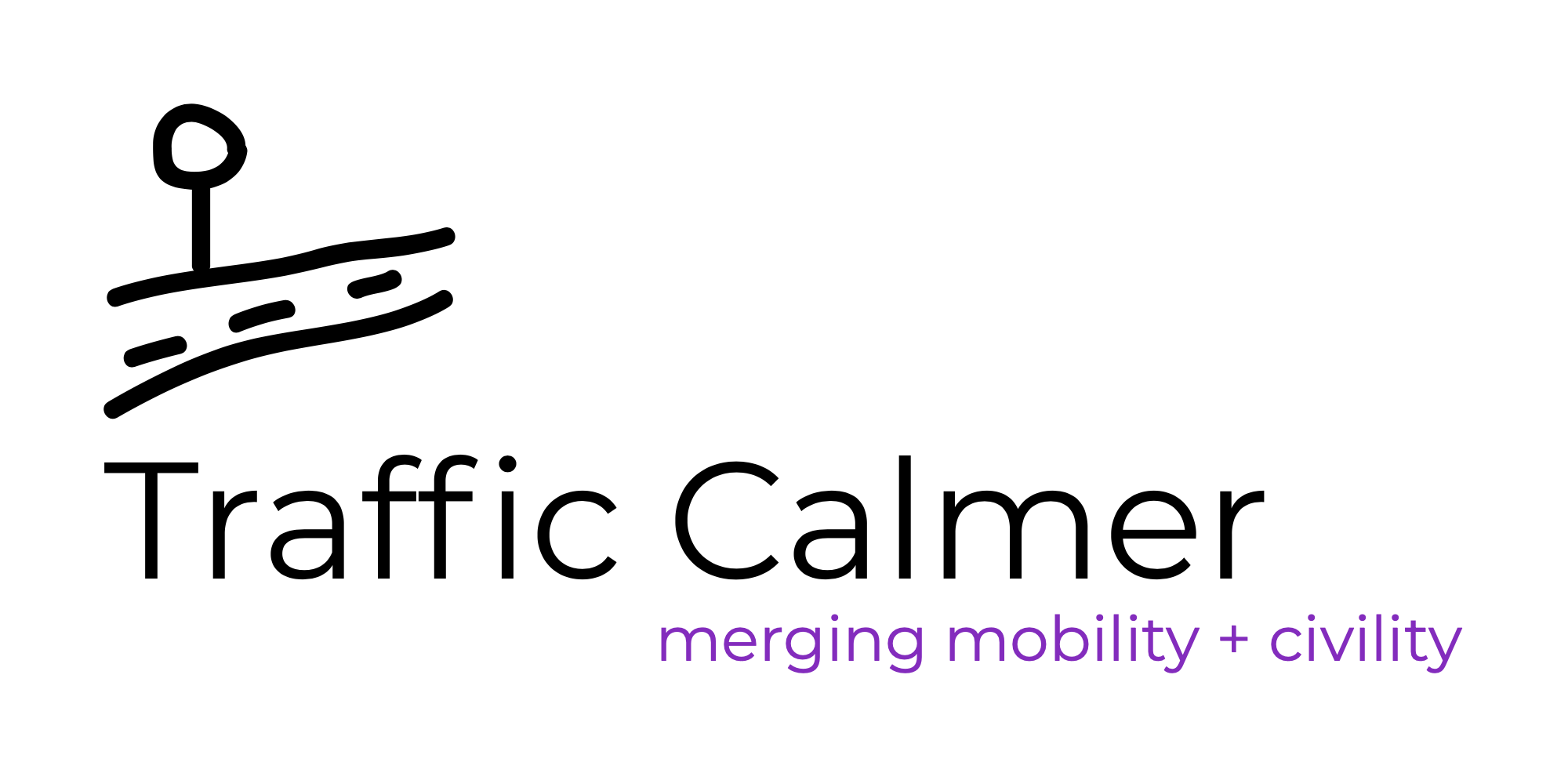Michael R. King, dba TrafficCalmer
Michael founded the consulting practice TrafficCalmer in 1998, after he was the first Director of Traffic Calming at the New York City Department of Transportation. The first contract was as a visiting scholar at the Research Institute for Regional and Urban Development in Dortmund, Germany. It is here that Michael solidified his desire to repurpose cities away from cars. Following long associations with Nelson\Nygaard and Buro Happold, Michael re-opened TrafficCalmer in 2018 to provide unfettered advice and expertise. The mission is to work with progressive cities, campuses, and NGOs to advance a green mobility ethos. Climate change is real and our mobility habits are partially responsible. The city of tomorrow must be re-envisioned for those living and prospering in it, not driving through it.
Traffic must be calmer, if at all.
Michael’s portfolio includes complete streets, design guides, mobility networks, tactical urbanism, transit stations, urban design, vision zero, accessibility (ADA) and workshops. The approach is to explore and understand history, assess potential, develop forward-thinking initiatives, and build the team to implement. He has worked in 20 states and 24 countries on 5 continents. Highlights include:
1st national street design guide, NACTO Urban Street Design Guide
1st Director of Traffic Calming at NYC DOT
1st Safe Routes to School program in USA – Bronx NY
2nd shared street in nation - Santa Monica CA
Highest volume road diet in USA - St Louis MO
Largest bus rapid transit system in Asia - Guangzhou (China)
Progressive street design guides for Abu Dhabi (UAE), Chicago IL, and Mississauga (Ontario, Canada)
2008 US DOT Safe Routes to School Task Force
2013 Professional of the Year, Association of Pedestrian and Bicycle Professionals
Michael’s umbrella of services include all aspects of transportation/mobility planning and urban design. First and foremost, he sketches and draws. Solutions, ideas, flow charts. Those form the basis for most of the guides and designs he has worked on. Second, he writes. Guides, reports, and tech memos. He calculates things. Street dimensions, noise readings, speed surveys. He spends time in the field understanding the site and situation. He takes many pictures. Finally, he lectures and gives presentations.
Honesty • Humility • Humor
Michael routinely partners with collaborators. Rick Chellman of TND Engineering is a licensed PE in the lower 48 and provides engineering and parking services. Walter Hook and Annie Weinstock of BRT Planning provide transit and transit-oriented development services. Rachel Weinberger provides parking and transportation planning services. Pranjali Deshpande provides street design services. Independence allows us to focus our energies on progressive ideas. We routinely sub-contract with planning, design and engineering firms. Integrating with larger firms allows them to maintain the means of production. We also contract directly with municipalities and clients including the World Bank and Asian Development Bank.
A hallmark is long-term associations. The Institute for Transportation and Development Policy has been a steadfast client since 2000. The first Real Intersection Design workshop was organized in 2000, with 48 to follow. After co-authoring the NACTO Urban Street Design Guide in 2013, Michael became a certified trainer. The NGO People-oriented Cities lists Michael as a technical expert.
Michael is based in Saratoga Springs, New York, USA (half way between New York City and Montreal) with an outpost in Fort Worth, Texas. He is an Architect, registered in NY.
A debt of gratitude to those who have influenced the work
Jan Gehl, Reid Ewing, Ezra Hauer, Carmen Hass-Klau, Jane Jacobs, Kevin Lynch, David Graham Shane, William Holly Whyte
Land acknowledgement
The Traffic Calmer office is located on the traditional homeland of the Mohican, Mohawk and Abenaki peoples.
Back story
The story begins in a pew. Passing the time during the sermon, I drew multi-leg street intersections in the margins of the bulletin. I guess I was trying to sort out the best way to make the lines connect. To this day, I still sketch while people lecture (please don’t take it personally).
In architecture school, I was drawn not to buildings, but to the space between them. And the political/economical/social aspects of how they got there. Styles come and go, but most buildings always need some sort of a front door. Cities can be seen as intersections writ large - what is the best way to make the buildings connect?
The leap from urban design to traffic (calming) was pretty seamless. The land between the property lines are called streets, and (in the USA) streets are largely controlled by traffic engineers. So I learned all about traffic and became the first Director of Traffic Calming for the New York City Department of Transportation. Ours was a dedicated bunch and we challenged the dominant “cars are king” orthodoxy of the time. Along the way we installed speed humps, curb extensions, leading pedestrian intervals, and Safe Routes to Schools.
more to come…
“a spirit with a vision is a dream with a mission”
